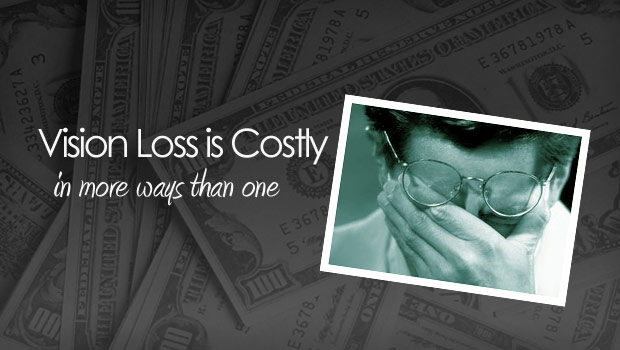Loss of vision is costly to the American taxpayers
Due to loss of vision, American taxpayers paid over $2 billion per year in non eye-related medical costs. Vision robbing […]


Loss of vision is costly to the American taxpayers
Due to loss of vision, American taxpayers paid over $2 billion per year in non eye-related medical costs. Vision robbing […]
Due to loss of vision, American taxpayers paid over $2 billion per year in non eye-related medical costs.
Vision robbing diseases like Macular Degeneration, Glaucoma and Diabetic Retinopathy are not just physically and emotionally costly to their victims — the loss of vision Medicare toll is billions of dollars per year, according to a study done by the Potomac Institute for Policy Studies, the Wilmer Eye Institute, and drug company, Pfizer, Inc.
Non-eye-related expenses total well into the billions of dollars

Most of the cases studied were patients with eye diseases like glaucoma, cataracts, diabetic retinopathy and macular degeneration. These conditions can be treated. Catching these diseases at an early stage significantly increases the success of treatment, minimizes permanent vision loss and reduces the financial strain on the Medicare system.
The study suggests a compelling need for preventative eye care. Dr. Deupree has always been a proponent of eye disease prevention through means of nutrition and overall health.
Vision loss prevention is, most importantly, a medical need, but its economic impact cannot and should not be ignored.
Hopefully, Medicare authorities will take these economic factors into account when making important decisions on coverage of ophthalmologic procedures and the new, proven drug therapies for wet macular degeneration.






